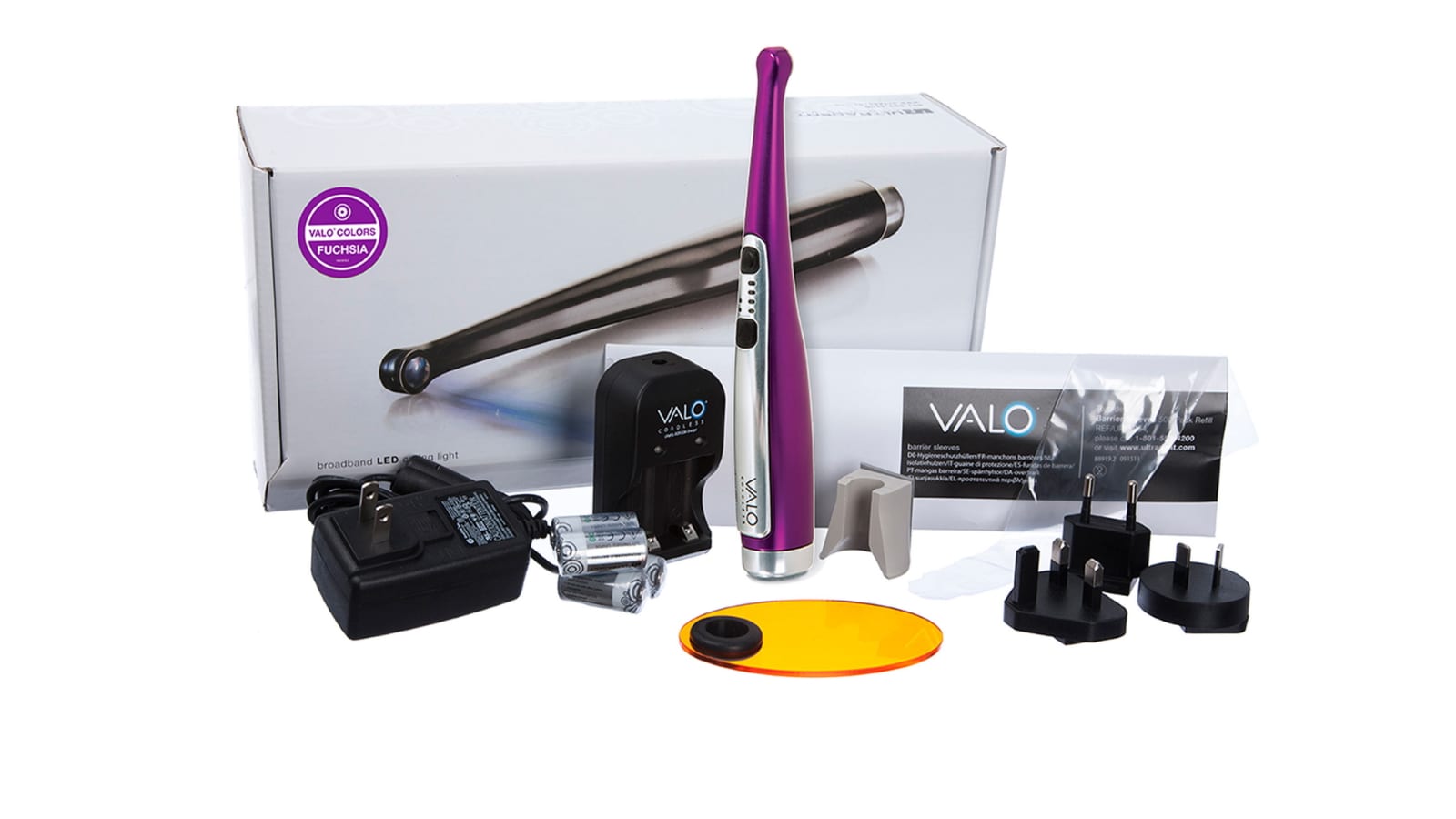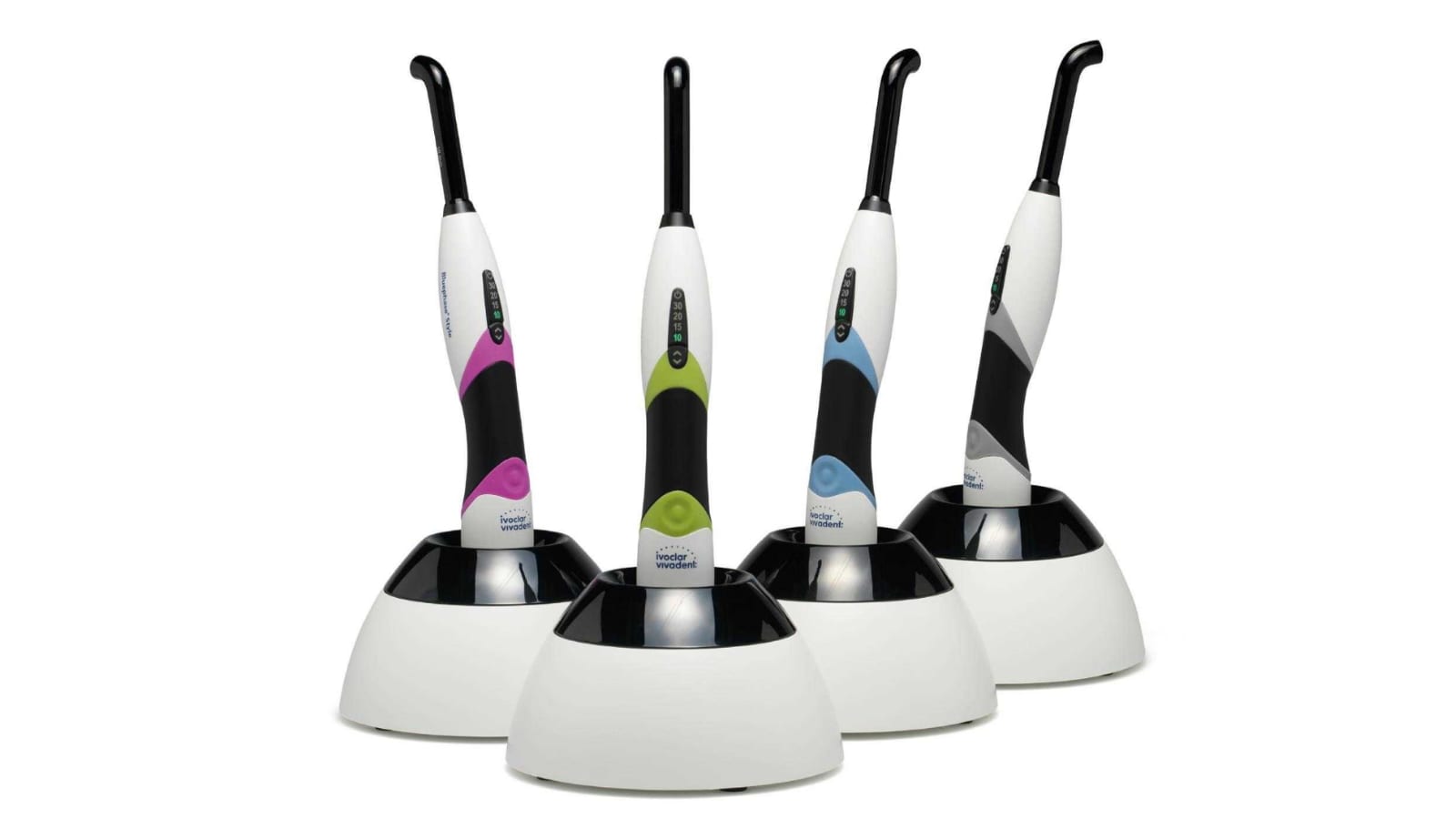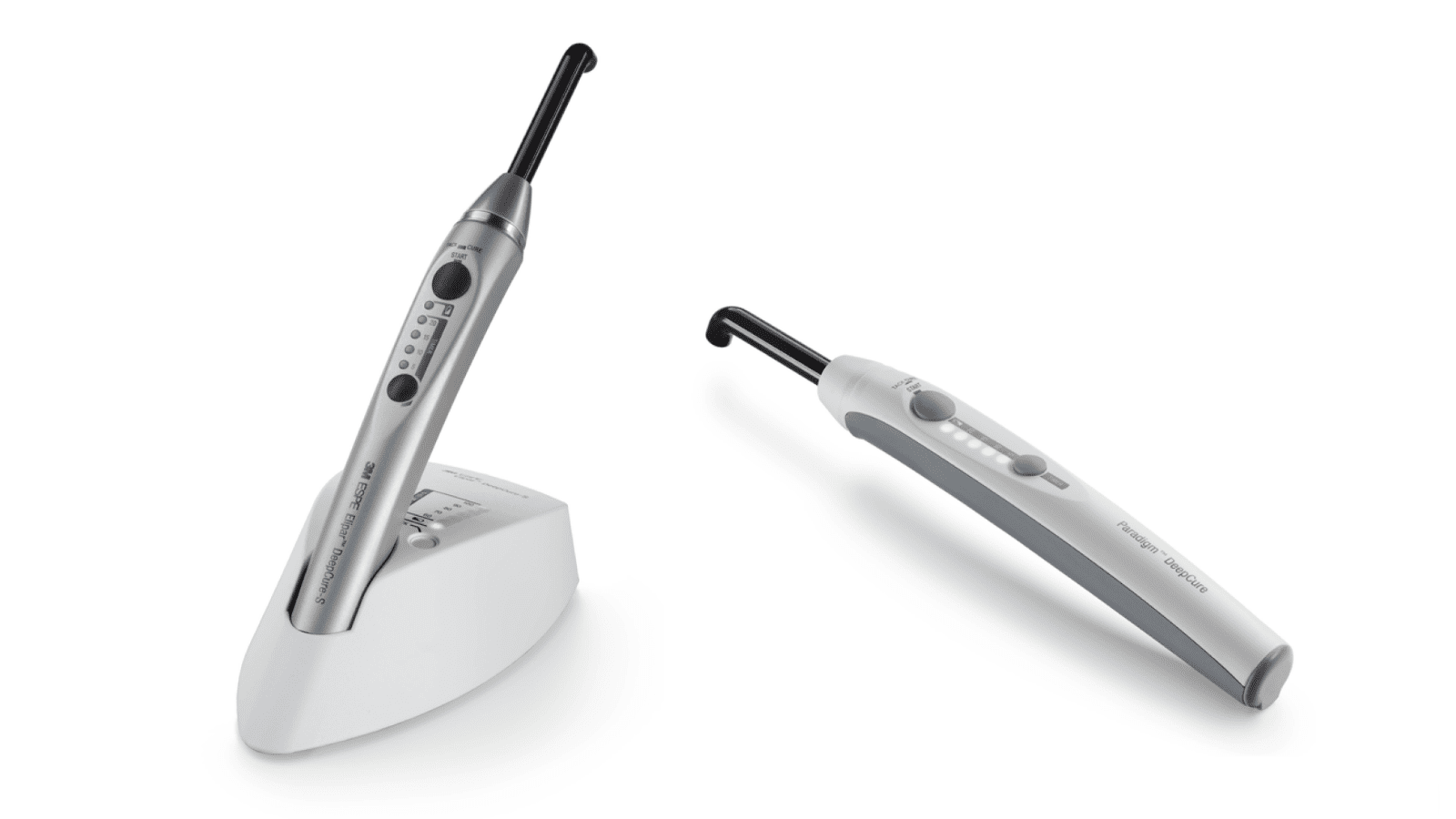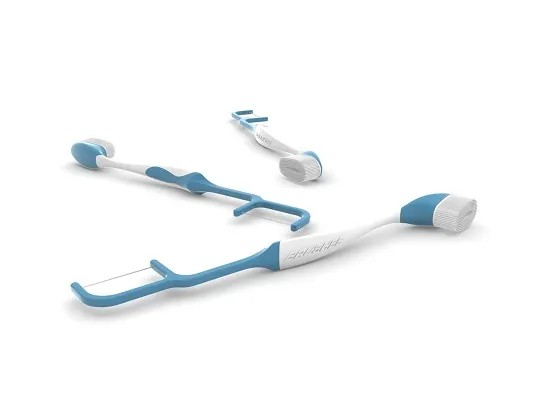How to select a curing light that fits your practice
Durable restoration relies on the right kind of curing light to be effective and long-lasting. But deciding what type of curing light to choose can be demanding, especially when you can only rely on the manufacturer’s claims. If you have a restorative practice, it’s an essential product because an effective light will achieve success, while an inefficient one will make efforts tedious and less consistent. Below, we’ll give you a basic outline of the basics and what experts, such as the Dental Advisor, say about choosing curing lights.
Types of Curing Lights
- LED Lights – L.E.D., or Light Emitting Diode, restricts the current flow of light into one direct through its connection to a circuit. These curing lights are lightweight, small, have a long battery light, and by today’s standards, give off the most consistent curing by their design. L.E.D. can refer to either blue light or multi-wave light of both blue and violet. The blue light activates the photoinitiator, while the multi-wave activates both the photoinitiator and alternative initiator. Some may lack tip selections, lack timers, and may have a harder time curing certain composites. Most new-style L.E.D. curing lights have a better time with beam divergence, and any tips that fan out the light in a cone shape can divert the curing process and divert the energy needed to cure the composite.
- Halogen – While considered to be an outdated product by industry standards, halogen lights have a reliable long track record for creating consistent cures. Halogen curing lights have a wider selection of curing materials they can work with due to their wide bandwidth. However, its design causes the need for cooling fans and a cord but does benefit from lower prices.
- Plasma Arc – A plasma arc curing light is an aluminum oxide vessel containing high-energy xenon gas under 150 psi. These curing lights produce focused beams and are typically designed within large base units and small tips for the desired effect. However, it cannot cure all materials and can be expensive.
- Argon Laser – Argon lights generate light by applying energy to the argon gas atoms. The electrons are raised higher in numbers to an unstable level and then release light through the argon gas. As some of the most expensive forms of curing lights, these create fast curing times and require a large unit to encompass the laser. However, it may not cure all materials and require small tips and cords to function.
Our Recommendations for Curing Lights
Curing lights should be able to have access to both adult and pediatric patients, getting into the right angles without interfering with the composite. It should have enough intensity to ensure a good cure, an intensity between 750 to 2000 milliwatts per square centimeter. Any curing light that generates watts higher than 2,000 can generate excessive heat and cause a waste of energy, which will not cure the composite any faster.
While higher wattages can appear attractive, they don’t always cure the composite faster. As a dentist, you should follow the suggested curing times from the composite manufacturer, not the light manufacturer.
Find a curing light that gives off a homogeneous, uniform light beam between 3 to 10 mm, and curing lights that produce hot spots should be avoided at all costs due to their lack of consistency with the composite. Keep things simple, and be aware of the differences between certain lighting options in their power, modes, and light source.
1. Triad 2000 by Dentsply Sirona

Product Description
The Triad 2000 by Dentsply Sirona is a versatile, halogen-light curing unit designed for the fabrication and repair of acrylic dental devices. Engineered for use with Triad and Radica materials, it supports efficient, high-quality curing processes for removable prosthetics and custom appliances.
Product Overview
Equipped with a rotating and lift platform, the Triad 2000 offers customizable curing cycles with or without a cast. This large-format unit allows for the fabrication of custom trays, denture relines, impression trays, nightguards, implant guides, and orthodontic appliances. Its precision controls and adaptability make it an essential tool for restorative and laboratory procedures requiring advanced light curing.
Key Features
Halogen light source for Triad and Radica materials
Large curing chamber with rotating and lift platform
Customizable curing with or without using a cast
Ideal for fabricating acrylic prosthetics and appliances
Supports advanced curing cycles for various restorative devices
User-friendly interface and precision control settings
Designed for efficiency in removable and laboratory workflows
Common Applications
Fabrication of custom trays, nightguards, and impression trays
Denture relines and repairs
Implant placement guides
Orthodontic and prosthetic device curing
Restorative lab procedures using light-cured acrylics
Technical Specifications
Product Name: Triad 2000
Brand: Dentsply Sirona
Light Source: Halogen
Compatibility: Triad and Radica materials
Features: Rotating/lift platform, customizable curing cycles
Use Case: Dental prosthetic and appliance fabrication
Price: $1,145.95 (Safco Dental)
Customer Ratings
Rating: Not available
Customer Feedback
Highly efficient for multi-purpose curing
Reliable results for a wide range of dental appliances
A must-have for labs using Triad and Radica systems
2. Valo Cordless by Ultradent

Product Description
The Valo Cordless by Ultradent is a high-performance, multi-wavelength LED curing light designed to deliver the power and intensity of halogen lights with the convenience of cordless functionality. Engineered for durability and ergonomic comfort, it ensures effective curing of all light-activated dental materials.
Product Overview
Producing a broad-spectrum light between 385–515 nm, the Valo Cordless can cure all light-cured resins, including composite, resin cements, and even porcelain materials. The unibody aluminum construction enhances heat dissipation and ensures durability under heavy clinical use. It features three curing modes and is powered by two rechargeable lithium-ion batteries for continuous, cordless operation.
Key Features
Multi-wavelength LED light (385–515 nm)
Cures all light-cure materials, including resin cements and porcelain
Halogen-equivalent power and intensity
Unibody aluminum design for superior heat dissipation
Three curing modes for clinical versatility
Cordless operation with rechargeable lithium-ion batteries
Ergonomic design for better intraoral access and patient comfort
Highly durable for long-term clinical use
Common Applications
Curing composite and resin-based materials
Light-curing resin cements and adhesives
Porcelain repair and luting procedures
General restorative and cosmetic dentistry
Technical Specifications
Product Name: Valo Cordless
Brand: Ultradent
Light Range: 385–515 nm
Modes: 3 curing modes
Power Source: 2 rechargeable lithium-ion batteries
Construction: Unibody aluminum for heat control
Use Case: Universal light-curing applications
Price: €1023,90 (Dentaltix)
Customer Ratings
Rating: 5 out of 5 (Based on 2 reviews on Dentaltix)
Customer Feedback
Highly rated for intensity and reliability
Excellent ergonomic handling and access
Preferred for its power, durability, and curing precision
3. Bluephase Style by Ivoclar Vivadent

Product Description
The Bluephase Style by Ivoclar Vivadent is a premium LED curing light known for its broad wavelength range, high-intensity output, and exceptional ergonomic design. Recognized with the Editor’s Choice award by The Dental Advisor and boasting a 96% clinical rating, it is one of the most trusted curing lights on the market.
Product Overview
With a light emission range of 385–515 nm and an intensity of 1000–1200 mW/cm², Bluephase Style efficiently cures all light-activated dental materials, including deeper restorations. The compact 10 mm light guide allows for optimal access to all areas of the mouth, while curing times of 10, 15, and 30 seconds provide flexibility. A long-lasting battery and lightweight build further enhance its clinical usability and comfort.
Key Features
Wavelength spectrum: 385–515 nm
Light intensity: 1000–1200 mW/cm²
10 mm light guide for better access to all tooth surfaces
Curing times: 10, 15, and 30 seconds
Ergonomic, lightweight design for comfortable handling
Long battery life for uninterrupted procedures
Cures all light-curing materials, including deeper restorations
Awarded Editor’s Choice by The Dental Advisor
Clinical rating: Five stars, 96% satisfaction
Common Applications
Light-curing composite restorations
Resin-based adhesives and cements
Anterior and posterior restorations
Deeper cavity curing with precision
Technical Specifications
Product Name: Bluephase Style
Brand: Ivoclar Vivadent
Wavelength Range: 385–515 nm
Light Intensity: 1000–1200 mW/cm²
Light Guide Size: 10 mm
Curing Times: 10, 15, 30 seconds
Power Source: Rechargeable battery
Use Case: Universal restorative curing
Price: $1,508.95 (Safco)
Customer Ratings
Rating: Five stars – 96% clinical satisfaction (The Dental Advisor)
Customer Feedback
Praised for powerful curing and exceptional ergonomics
Highly durable and efficient for daily clinical use
Top choice for clinicians needing reliability and access
4. Elipar DeepCure-S by 3M ESPE

Product Description
The Elipar DeepCure-S by 3M ESPE is a high-performance LED curing light engineered for deep and consistent curing of dental materials. Featuring optimized optics and a powerful light intensity of 1,470 mW/cm², it ensures reliable and uniform polymerization, even in deeper cavities.
Product Overview
With a 10 mm tip diameter and enhanced light guide geometry, the Elipar DeepCure-S delivers even light distribution across the curing surface. Its ergonomic tip angle is designed for easy access to all tooth surfaces, including those in patients with limited mouth opening. The unit’s simple two-button, one-mode operation streamlines curing, and the durable glass-ceramic coating makes cleaning effortless.
Key Features
Optimized optics for consistent light distribution
Powerful 1,470 mW/cm² intensity across a 10 mm tip
Ergonomic angled tip for superior intraoral access
Uniform curing for reliable polymerization
Simple two-button operation for clinical efficiency
One-mode operation to reduce confusion and speed up treatments
Glass-ceramic coating for easy cleaning and durability
Comfortable for patients and clinicians alike
Common Applications
Deep cavity and posterior composite curing
Universal use with light-curable restorative materials
Efficient curing in hard-to-reach areas
Procedures involving patients with limited mouth opening
Technical Specifications
Product Name: Elipar DeepCure-S
Brand: 3M ESPE
Light Intensity: 1,470 mW/cm²
Tip Size: 10 mm diameter
Light Distribution: Even and uniform through enhanced optics
Operation: Two-button, single-mode
Design: Angled tip with glass-ceramic coating
Use Case: Deep and comprehensive composite curing
Price: $1,665.95 (Safco Dental)
Customer Feedback
Clinicians appreciate its even curing and deep reach
Easy to operate and clean
Ideal for fast, dependable curing in all clinical settings
5. S.P.E.C 3 by Coltene

Product Description
The S.P.E.C 3 by Coltene is a high-performance LED curing light built for speed, versatility, and long-lasting reliability. With curing capabilities of 2 mm depths in just 5 seconds and a powerful standard output of 1600 mW/cm², it delivers rapid polymerization across a wide range of light-cure materials.
Product Overview
Operating within a wavelength range of 430–490 nm, the S.P.E.C 3 is compatible with most dental composites and adhesives. It features three curing modes, an ergonomic lightweight aluminum body for comfort and easy disinfection, and powerful lithium-ion batteries capable of over 300 ten-second cures per charge. Its boost function allows clinicians to increase intensity when needed, making it one of the most adaptable curing lights on the market.
Key Features
Standard output of 1600 mW/cm²
Cures 2 mm in as little as 5 seconds
Wavelength range: 430–490 nm
Three curing modes for procedural flexibility
Aluminum body for durability and easy disinfection
Ergonomic and lightweight for user comfort
Rechargeable lithium-ion battery – 300+ 10-second cures per charge
Compatible with various light-cure materials
Boost mode for added curing intensity when needed
Common Applications
Rapid composite curing in restorative procedures
Adhesive cementation and sealants
Anterior and posterior restorations
Deep curing and fast-paced clinical settings
Technical Specifications
Product Name: S.P.E.C 3
Brand: Coltene
Light Intensity: 1600 mW/cm² (with boost mode)
Wavelength Range: 430–490 nm
Curing Modes: 3 operation modes
Body Material: Aluminum
Battery: Rechargeable lithium-ion
Battery Life: Over 300 ten-second cures per charge
Use Case: High-efficiency composite curing
Price: $1,278.20 (Safco Dental)
Customer Feedback
Highly praised for speed and efficiency
Durable and long-lasting with excellent battery life
Flexible functionality for a wide range of clinical needs


